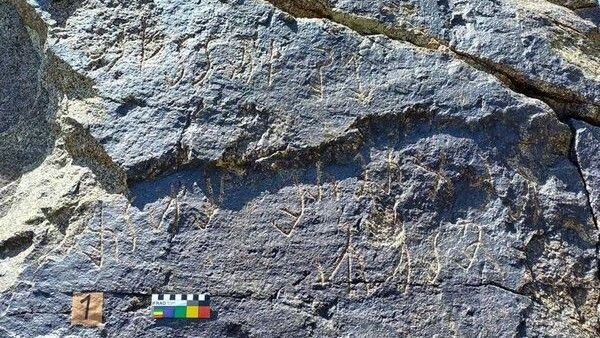Extinct script of Iranian origins decoded 70 years after its first discovery

TEHRAN - Researchers have deciphered parts of a so-called “Kushan script”, which is an extinct Eastern Iranian language used as the official language of the Kushan and the Hephthalite empires.
They decoded more than half of the characters of the writing system by comparing them with inscriptions in a known ancient language called Bactrian. The writing system has puzzled linguists since it was first found in the 1950s, according to Live Science.
The ancient text has been deciphered with the help of rock face inscriptions that were discovered near the Almosi Gorge in northwest Tajikistan in 2022, which include sections in an extinct but known language called Bactrian.
“We have worked out that the so-called 'Kushan script' was used to record a previously unknown Middle Iranian language,” lead study author Svenja Bonmann, a comparative linguist at the University of Cologne in Germany, said in a video posted by the university on July 13.
“In other words, we have deciphered the script.”
Experts say that this Middle Iranian language was likely one of the official languages of the Kushan Empire, which sprawled across Central Asia and northwestern India between 200 BC and 700 CE. At the height of its power, in the second century CE, the Kushans co-existed with the Roman Empire. Ancient Eurasian nomads that originally settled in the Kushan Empire — called the “Tocharians” by Greco-Roman authors — may also have spoken the language, which the researchers have proposed to call “Eteo-Tocharian.” (“Eteo” is a prefix used by modern scholars that means “true” or “original.”)
Bonmann says the script, which is related to the Kushan language, remains elusive in part because many texts have not stood the test of time. “Most of what was written at the time was probably recorded on organic materials, such as palm tree leaves or the bark of birch trees. Organic material decomposes very quickly, which means practically none of it remains.”
More clues about the Kushan language have been provided with the help of characters carved into cave walls and painted onto ceramics across Central Asia. Several dozen of such inscriptions have been found by archeologists since the late 1950s, mostly in present-day Tajikistan, Uzbekistan and Afghanistan.
“Researchers have worked on this for decades, mostly in France and Russia, but they were met with little success,” Eugen Hill, a professor of comparative linguistics at the University of Cologne who did not participate in the study, said in the video.
An Iranian language
In a study published July 12 in the journal Transactions of the Philosophical Society, Bonmann and his colleagues examined newly discovered "bilingual" inscriptions and deciphered the Kushan script using methods similar to those previously used to decipher other ancient languages.
“The best-case scenario is to have a parallel text — a so-called bilingual or trilingual — that presents approximately the same meaning, but in two or three different scripts or languages,” Bonmann said.
In this case, the researchers were able to work out the Kushan, meaning using parallel inscriptions in Bactrian carved into rocks found at Almosi Gorge and at Dast-i Nawur, in Afghanistan, in the 1960s.
“We had parallel texts and we knew that the elements they contained were likely to come up in our script,” Bonmann said. “Step by step, we were able to read more and more Iranian words, so it became clear that this was an Iranian language.”
According to the study, the discovery sheds light on more than half of the 25 to 30 signs used in the Kushan script. The team hopes that by re-examining known inscriptions and looking for other examples, they will be able to decipher the remaining characters and read the entire enigmatic inscription.
AFM
Leave a Comment